Tulips "Lalibela": description of the variety and the subtleties of its cultivation

Tulips of different varieties are a real decoration for any home garden. They are preferred to grow not only by professional growers, but also by amateurs. Tulips of the hybrid variety "Lalibela" are in great demand for their original appearance and ease of growing. In this article, we will take a closer look at the description and features of this variety, we will learn the intricacies of its cultivation and care.
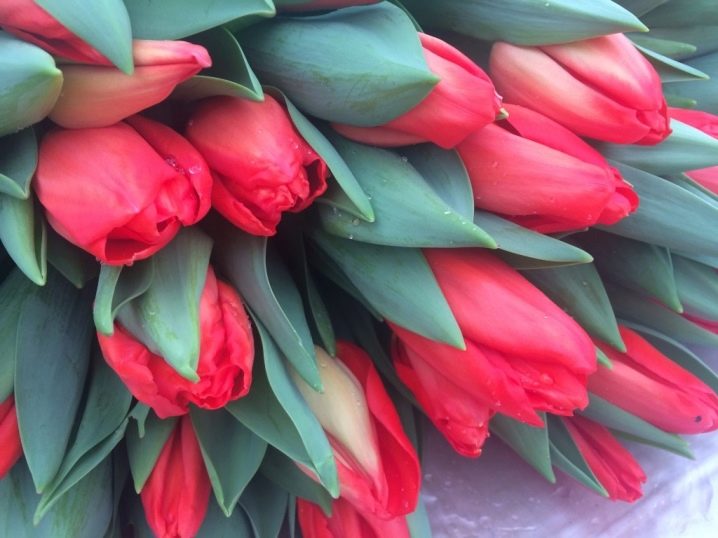
Description
The "Lalibela" variety belongs to the selection, was first bred in Holland. Tulips of this variety have a large goblet bud, usually about 10 cm in size. The color is even, deep red. The stem is quite powerful, reaching a height of 80 cm.
The petals of the flower have a glossy structure, densely located to each other.
The rhizome of Lalibela tulips is well developed, represented by a large bulb, which serves as a so-called reservoir of nutrients that feed the plant during flowering and throughout its life. The leaves are large, have a rich green color. Under normal conditions, flowering occurs in mid-spring and continues until the beginning, and sometimes mid-June, it all depends on the growing conditions.

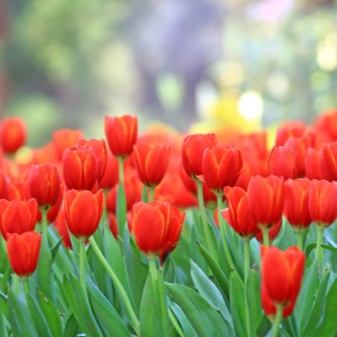
This variety perfectly survives small frosts and windy weather. With a sharp change in climatic conditions, the flower can easily take its previous shape - its leaves will not be damaged.
With proper care and good living conditions in greenhouse conditions, tulips of this variety can grow all year round. Tulips "Lalibela" rarely get sick, they are quite unpretentious to care for and they can be easily propagated independently by dividing the bulbs.
Flowers of this variety are bright red in color, used to complement any flower beds with other plants or for growing in greenhouses.

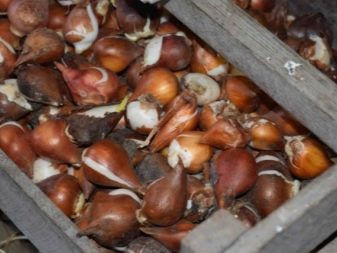
The subtleties of growing and care
Tulips are usually planted in the autumn season, when the soil temperature does not exceed 10 degrees. Lalibela tulips are most commonly grown in greenhouse conditions. They feel best there. However, after being cut, they can wither quickly.
When growing tulips in a greenhouse, it is necessary to observe the correct temperature and humidity in the room. It is also very important that the soil is always moistened, but not overflowed, otherwise the rhizome and the tulip bulb itself will begin to rot.
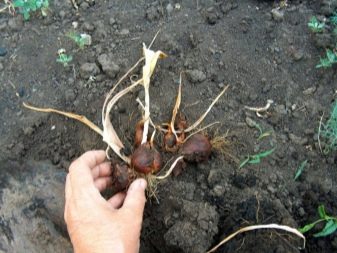
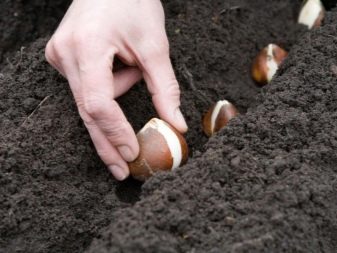
If varietal plants are planted in ordinary soil, then you need to make sure that the scorching sun does not fall on them, therefore, it is preferable to choose penumbra areas. When planting, tulip bulbs should be planted to a depth of no more than 20 cm. The same spacing should be between the plants themselves. Old bulbs should be dug up every year. It is recommended to change the growing place every 5 years.
If the plants will be planted in a greenhouse, then an external temperature of up to +10 is recommended for them. But at the same time, every next few weeks, the temperature should be increased to + 17-20 degrees so that the plant takes root as quickly as possible. Very young plants need to be watered every 8-10 days or as the soil dries out. Adult plants are recommended to be watered every 2-4 days.
Lalibela cut greenhouse tulips can be stored for up to 15-20 days in a cool room.

Possible diseases
Like any plants, tulips are susceptible to all sorts of diseases and attacks. insects.
- To prevent the flowers from withering immediately after cutting, it is very important to treat the secateurs with a special antiseptic before that. So, the juice, if it is infected, will not get to other tulips and plants.
- It is strongly recommended to isolate the diseased plant from all others, and it is best to dig it up and burn it. Especially if it is covered with white or dark spots, which may indicate a fungal infection.
- Tulip bulbs should be purchased only from trusted flower growers. Otherwise, you can purchase tulips that are infected with variegation. To treat them is absolutely useless, as many experts believe.
- You can treat fungal diseases on tulips with the help of special fungicidal agents, which are sold in gardening stores. But only if the fungus has not depleted the plant at all. Use the funds according to the instructions. As for getting rid of insects and various pests, you can get rid of them with the help of special insecticides that can kill whiteflies, scale insects and other insects that attack plants. Sometimes, from insects, you can prepare herbal infusions using wood ash.
When such pests as the bear appear, which loves to feast on tulip bulbs, you can use poisoned baits.
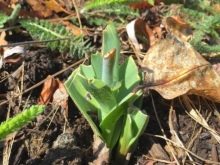

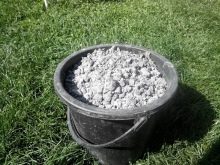
When working with any poisons, it is very important to observe safety precautions. Work should only be done with gloves and a protective mask.
How to plant tulips correctly is described in the next video.







































































































The comment was sent successfully.